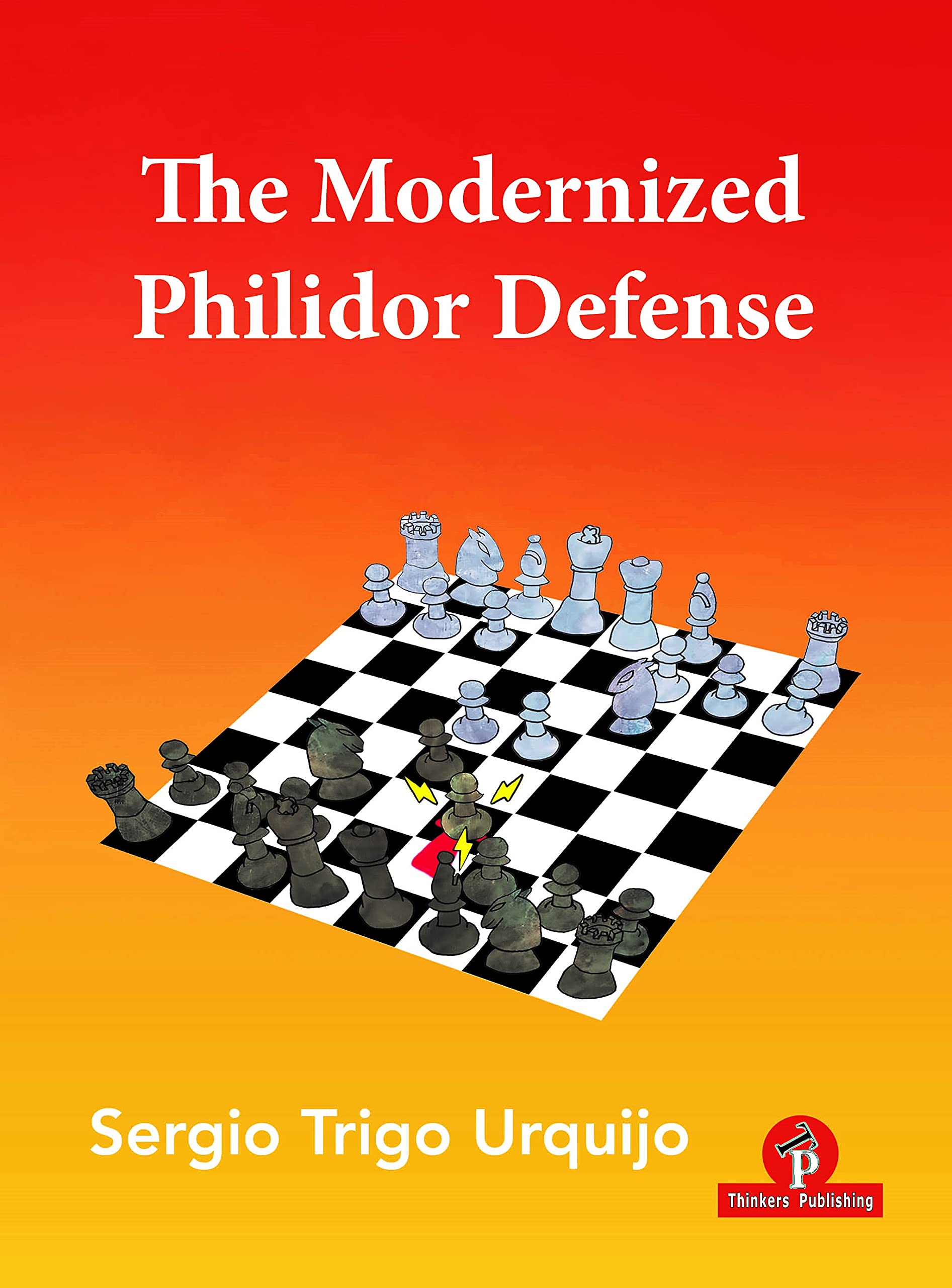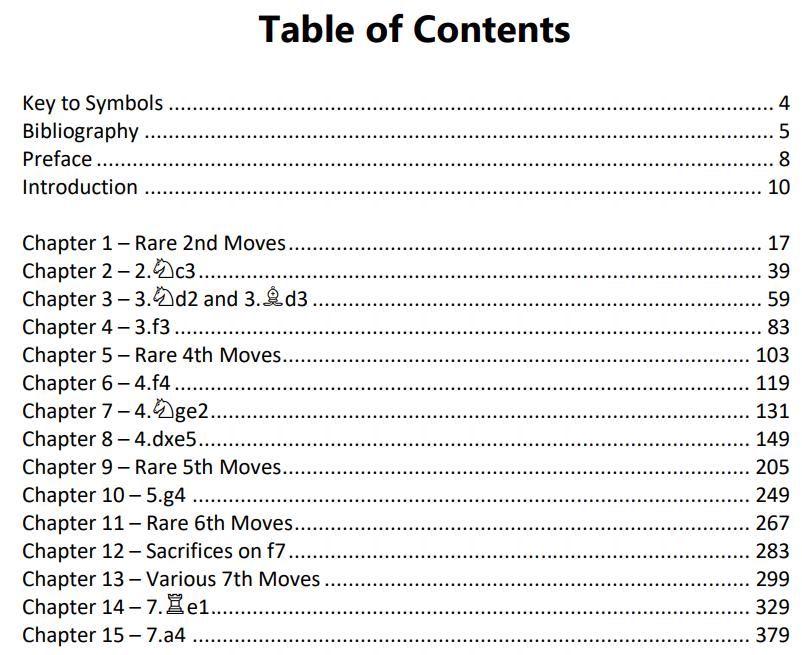
From the publisher:
“Pawns are the soul of chess.” We have all heard this phrase more than once in our chess life and we owe it to the great French player François-André Danican, so-called Philidor, considered one of the best chess players of the 18th century.
It’s not surprising that with this way of thinking, he revolutionized chess, which until then was almost all about direct attacks on the king. With this, he also changed the way of understanding and playing openings, in which he introduced a new concept for the time – that the pawns should be ahead of the pieces.
Bearing this in mind, the defense he created can be much better understood, in which all these rules are fulfilled and the importance of the pawn structure is maximal.”

“Sergio Trigo Urquijo was born in the Basque Country (Spain) in 1989. He learned to play chess at age of six. As a junior he won local many championships from u-12 to u-18. He performed successfully as a player and captain of the Sestao Chess Club winning the national team Championship in 2012, 2013, 2016, 2017 and 2018, including 9 times Basque Team Champion.
He won the silver medal in the Portugal Club Cup in 2015 and has played in the European Club Cup in 2014. He is known as being a second of several grandmasters during many important evens.”
End of blurb.
As with every recent Thinkers Publishing publication high quality paper is used and the printing is clear. We were hoping that the excellent glossy paper of previous titles would be used for this one but never mind.
Each diagram is clear and the instructional text is typeset in two column format, which, we find, enables the reader to maintain their place easily. Figurine algebraic notation is used throughout and the diagrams are placed adjacent to the relevant text and each diagram has a “to move” indicator and a “position after: x move” type caption.
There is no Index or Index of Variations but, despite that, content navigation is relatively straightforward as the Table of Contents is clear enough.
This is the author’s first chess book and he is an active player of the Modern Philidor with the black pieces and has a healthy score of 70.6% with it.
Here is the detailed Table of Contents:

and here is an excerpt in pdf format.
It is strange to think that the “Modern Philidor” has more or less stepped into the main stream of defences to 1.e4 from a time of relative obscurity. This 2021 tome from Sergio Trigo Urquijo is the latest on 1…d6 since around 2016. One of the first questions I wanted to answer was “Does this work cover the off-shoot Lion Defence?” The characteristic of the Lion variant is that Black plays an early h6,g5 and re-routes the d7 knight to f8 and then g6 and maybe f4. This book does not cover this variant.
The critical lines appear in chapters 15, 14, 12 and 10 since I don’t regard the queenless middlegames as particularly critical, they are simply at least equal for Black.
The core start position is
and Chapter 15 examines the tabiya
emphasizing that a4 is almost always going to happen these days compared with 7.Re1 (chapter 14) of previous times.
Somewhat surprisingly the author recommends the capture 7…exd4 rather than more expected and popular 7…c6 in order to activate the d7 knight. He suggests using the c6 square for a knight rather than the usual gradual queenside pawn push from Black. Interesting. From either White recapture the author provides a great deal of detailed analysis suggesting that the move seven capture is a sensible alternative to 7…c6.
Various seventh move alternatives are discussed in Chapter 13 of which 7.dxe5 might be the most popular.
A significant chapter is 12 covering the various important sacrifices on f7. Again, new analysis is introduced demonstrating that Black emerges with better chances after any of the f7 tries. This gives me an excuse to include:
which is probably one of the most well-known and entertaining games in this line.
Chapter 10 considers Alexi Shirov’s attempt to blow Black off the board with one of his signature g4 ideas:
Any player of the Modern Philidor must take this line seriously and the author provides a great deal of fresh ideas and analysis of how to combat 5.g4.
At lower levels the early exchange of queens following 4.dxe5 has to be respected despite its rare appearance at the elite level and at 59 pages Chapter 8 is the largest chapter.
Curiously, after the easily most popular 6.Bg5 the author eschews the common wisdom to play 6…Be6 (which scores best for Black and is easily the most popular) and recommends the curious 6…Nbd7 allowing 7.Bc4
I find it odd that the author does not discuss the reasons for recommending 6…Nbd7 over 6…Be6. 6.Bg5 then gets a mere seven pages of treatment in little detail. I have to say that I am not convinced and that this section deserves more work.
Moving on to the runner-up in the popularity stakes, 6.Bc4, there is greater depth and here 6…Be6 is selected rather than the increasingly popular 6…Ke8 of Zurab Azmaiparashvili which is entirely playable and the choice of the elite players.
Remaining chapters cover such important ideas for White as 4.Nge2, 3.f3 so that nothing important is left out.
In summary this work is a comprehensive repertoire book for Black for those players wishing to employ the trendy Modern Philidor (but not the Lion variant).
I very much like the treatment of 7.a4 and 7. Re1 with new ideas for Black avoiding the conventional slow …c6 and queenside expansion strategy using active piece play as an alternative. The 5.g4 treatment is detailed as is the sacrifices on f7 chapter.
I’m slightly less convinced of the queenless middlegame ideas and it seems to me that the the author is attempting to be novel for the sake of it: this might not be the way forward.
However, the title of the book includes “Modernized” and therefore the book “does what it says on the tin” and cannot be criticised for that reason. As a player of 1…d6 I would definitely buy and enjoy this book.
John Upham, Cove, Hampshire, 10th November, 2021

Book Details :
- Hardcover : 410 pages
- Publisher:Thinkers Publishing; 1st edition (20 September 2021)
- Language: English
- ISBN-10: 9464201207
- ISBN-13: 978-9464201208
- Product Dimensions: 17.15 x 2 x 23.5 cm
Official web site of Thinkers Publishing


Very good review.
Harding points out that after 1 e4 e5 2 Nf3 d6 3 d4 and now 3 … Nf6! is an improvement attributed to Nimzowitsch. In Tartakower’s ‘Breviary’ what is written only confused me, though I rejoice that Major Hanham is mentioned, his rank somewhat diminished by Purdy’s ‘Mad Hanahm’s Tea Party’ quip, not something likely to interest the current generation! Please give this book your time, as John indicates.